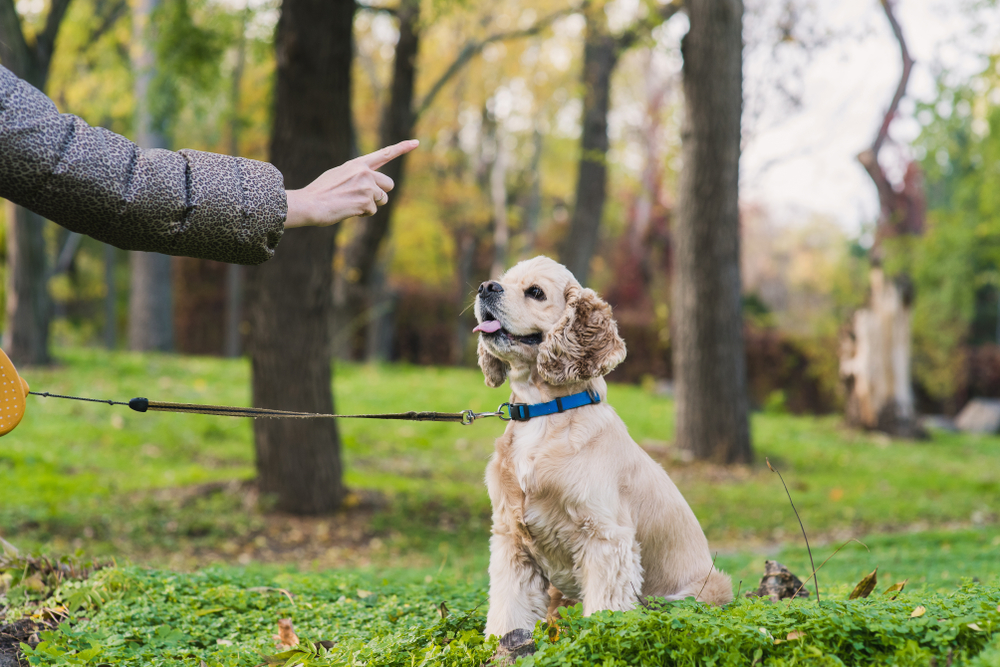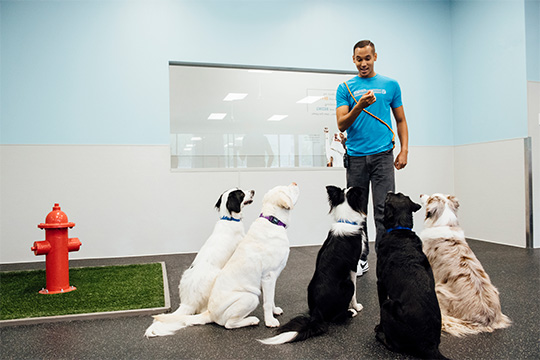Start Your Dog's Journey with Puppy Training That Builds Trust and Respect
Start Your Dog's Journey with Puppy Training That Builds Trust and Respect
Blog Article
Transform Your Canine's Actions With Proven Training Approaches
Changing your pet's behavior requires a nuanced understanding of their specific attributes and demands, as well as the application of proven training approaches. By employing positive support and identifying necessary cues in their body language, you can effectively deal with common behavior concerns such as extreme barking or leaping. Consistency in your training technique not just enhances obedience but also cultivates a much deeper bond of count on and regard between you and your animal. The path to successful makeover may provide unpredicted difficulties that warrant further exploration.

Recognizing Pet Habits
Recognizing canine actions is necessary for efficient training and interaction between human beings and their canine friends. Canines, as social animals, exhibit a variety of actions influenced by genetics, atmosphere, and experiences. Acknowledging these habits helps proprietors customize their training approaches to meet the certain needs of their dogs.
Secret elements of pet habits include body language, articulations, and social interactions. In addition, socialization plays a vital role in shaping behavior; dogs that engage positively with numerous people and various other animals are usually much more well-adjusted and versatile.
Moreover, identifying stress and anxiety signals-- such as pacing, avoidance, or panting behaviors-- can avoid escalation into extra serious problems. Owners who are attuned to their canine's behavior can produce a risk-free and nurturing environment, promoting depend on and boosting the training procedure. Eventually, a deep understanding of canine habits lays the structure for an unified partnership and effective training outcomes, ensuring both canines and their proprietors flourish with each other.
Positive Support Methods
Positive reinforcement techniques are extensively identified as one of one of the most effective approaches for training pet dogs, cultivating a positive knowing setting. This approach entails fulfilling desired behaviors with treats, appreciation, or play, consequently motivating the pet dog to duplicate those actions (Dog training). Unlike revengeful approaches, positive support builds count on and strengthens the bond between the pet and the instructor
To implement favorable support effectively, timing is crucial. Benefits ought to be given immediately adhering to the preferred behavior to aid the pet make the connection. Uniformity is additionally vital; using the same commands and benefits aids the pet dog understand what is anticipated. In addition, differing the rewards can keep the pet engaged. Rotating between deals with, toys, and spoken appreciation can maintain interest and inspiration.
It is essential to note that positive support is not concerning bribery; instead, it has to do with enhancing etiquette. Over time, as the pet learns to connect specific activities with favorable end results, the regularity of incentives can be gradually lowered, transitioning to spoken praise or periodic incentives. This method not only urges obedience however likewise advertises a certain and delighted dog, making training a more pleasurable experience for both celebrations entailed.
Addressing Typical Concerns
Resolving common concerns during canine training is essential for guaranteeing a successful and harmonious partnership in between the pet and its proprietor. Many pet owners experience behavior difficulties, such as excessive barking, leaping, and leash drawing. Comprehending the source of these habits is important for effective training.
To mitigate this, give sufficient physical exercise, mental stimulation, and opportunities for social communication with both people and various other dogs. Training the dog to sit upon welcoming can redirect this actions positively.
Leash drawing is an additional common issue, frequently resulting from a pet dog's passion to discover. Making use of correct leash handling strategies, incorporated with training procedures that encourage loose-leash strolling, can considerably improve this behavior.
Additionally, issues like resource safeguarding or splitting up anxiousness call for customized approaches. Gradual desensitization site link and counter-conditioning can be effective in resolving these obstacles. By identifying and proactively handling these common issues, dog proprietors can promote an extra delightful training experience and strengthen the bond with their canine companions.
Uniformity in Training
Uniformity is a keystone of effective pet training, as it develops a clear structure for the pet dog to understand habits and expectations. When commands, signs, and benefits are applied evenly, dogs can quicker realize what is required of them. Irregular training can bring about confusion, causing undesirable behaviors that irritate both the dog and the their explanation instructor.
To attain uniformity, it is essential that all participants of the family abide by the very same training methods. Utilizing the very same verbal cues and hand signals makes sure that the canine obtains consistent messages. In addition, the timing of benefits and modifications must be regular; immediate reinforcement boosts the possibility that the dog will certainly associate the behavior with the end result.
Additionally, developing a routine can additionally enhance consistency. Regular session, coupled with structured timetables for feeding, strolling, and play, help pets expect and understand their setting, making them much more receptive to training. Inevitably, uniformity promotes a feeling of safety and trust, equipping canines to learn a lot more effectively. By committing to a structured approach, fitness instructors can promote favorable behavior adjustments and cultivate a well-mannered friend.
Building a Strong Bond
How can promoting a solid bond between a canine and its owner improve the training experience? A strong partnership developed on depend on and respect acts as the foundation for reliable training. When a dog really feels safe and secure in its link with its owner, it is more likely to exhibit positive behaviors and be receptive to learning. This bond motivates the canine to involve totally in training sessions, as it watches the proprietor as a source of assistance and support.

Furthermore, a well-established connection can lower from this source anxiousness and behavioral issues, as pet dogs are less likely to act out when they really feel recognized and cared for. Consequently, focusing on the advancement of a strong bond not only enhances the training experience but also adds to a better and a lot more well-adjusted canine. Eventually, the journey of training transforms right into a joint collaboration, bring about lasting behavioral improvements.
Conclusion

Proprietors that are attuned to their pet dog's behavior can develop a safe and nurturing setting, promoting depend on and improving the training procedure. Inevitably, a deep understanding of canine behavior lays the foundation for a harmonious relationship and reliable training end results, ensuring both pets and their owners prosper with each other.
Resolving common issues throughout canine training is necessary for making certain a unified and successful partnership between the dog and its proprietor (Dog training).Consistency is a cornerstone of efficient pet dog training, as it establishes a clear framework for the pet dog to comprehend actions and expectations.In verdict, changing a dog's actions with confirmed training methods calls for an understanding of canine actions, the application of favorable reinforcement techniques, and an emphasis on consistency
Report this page